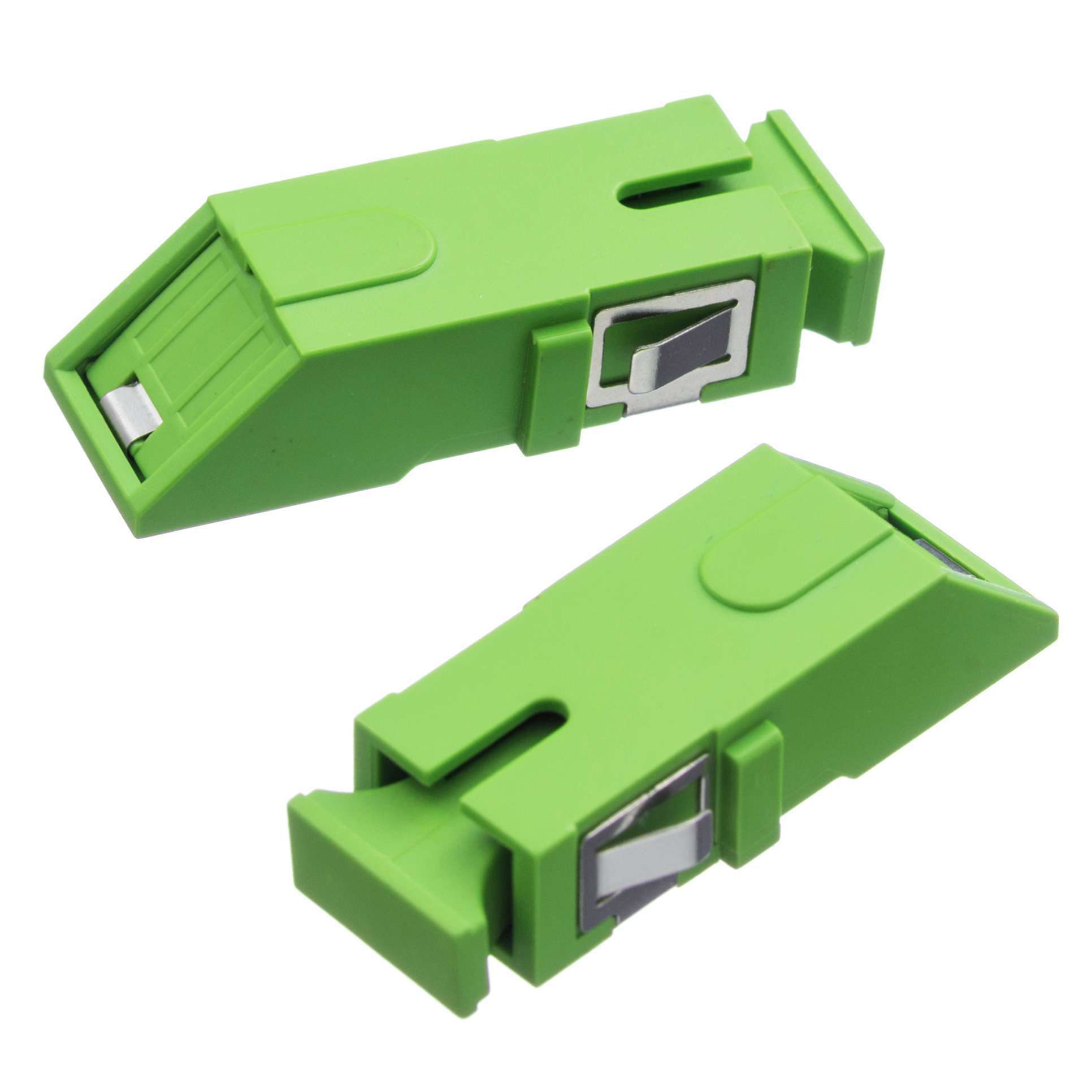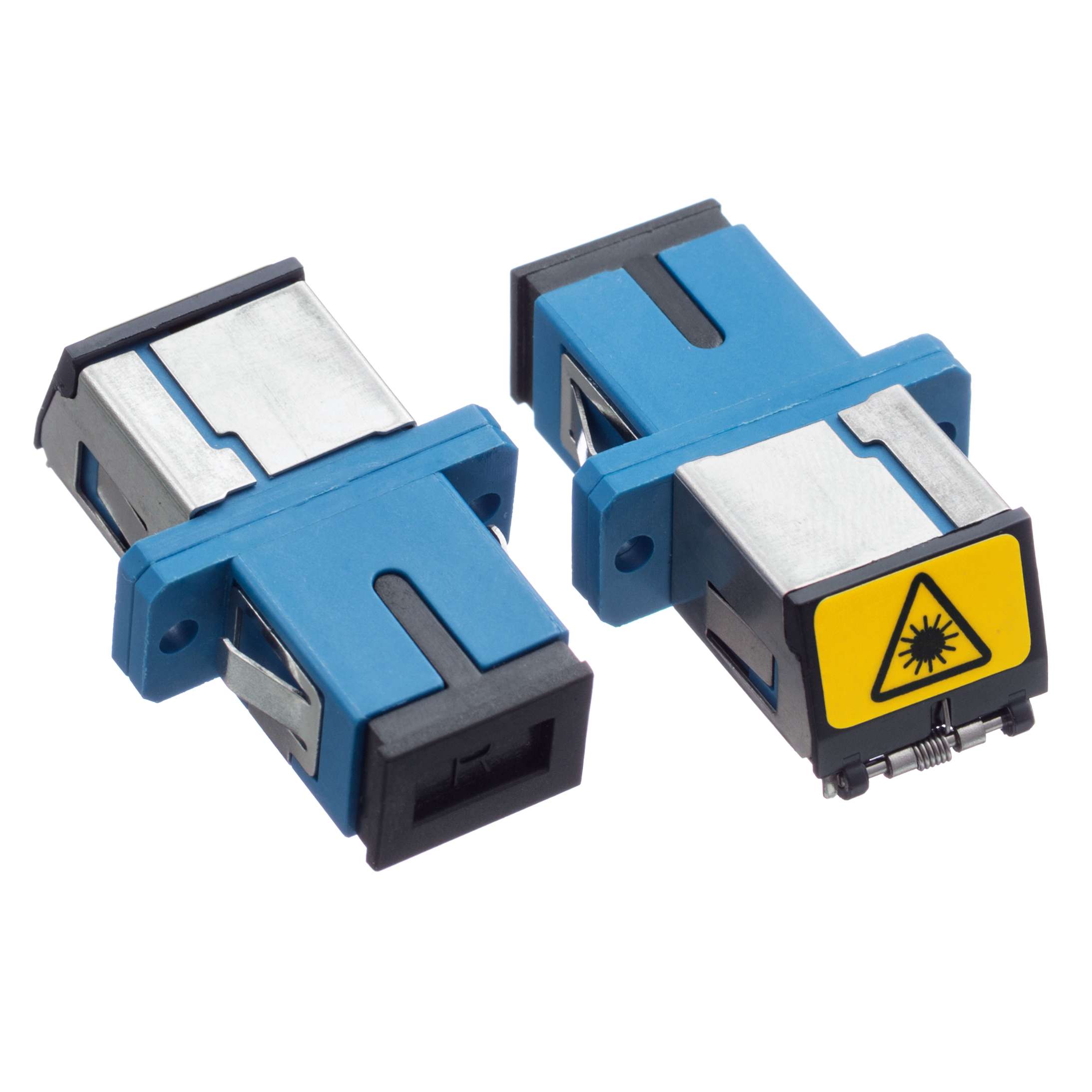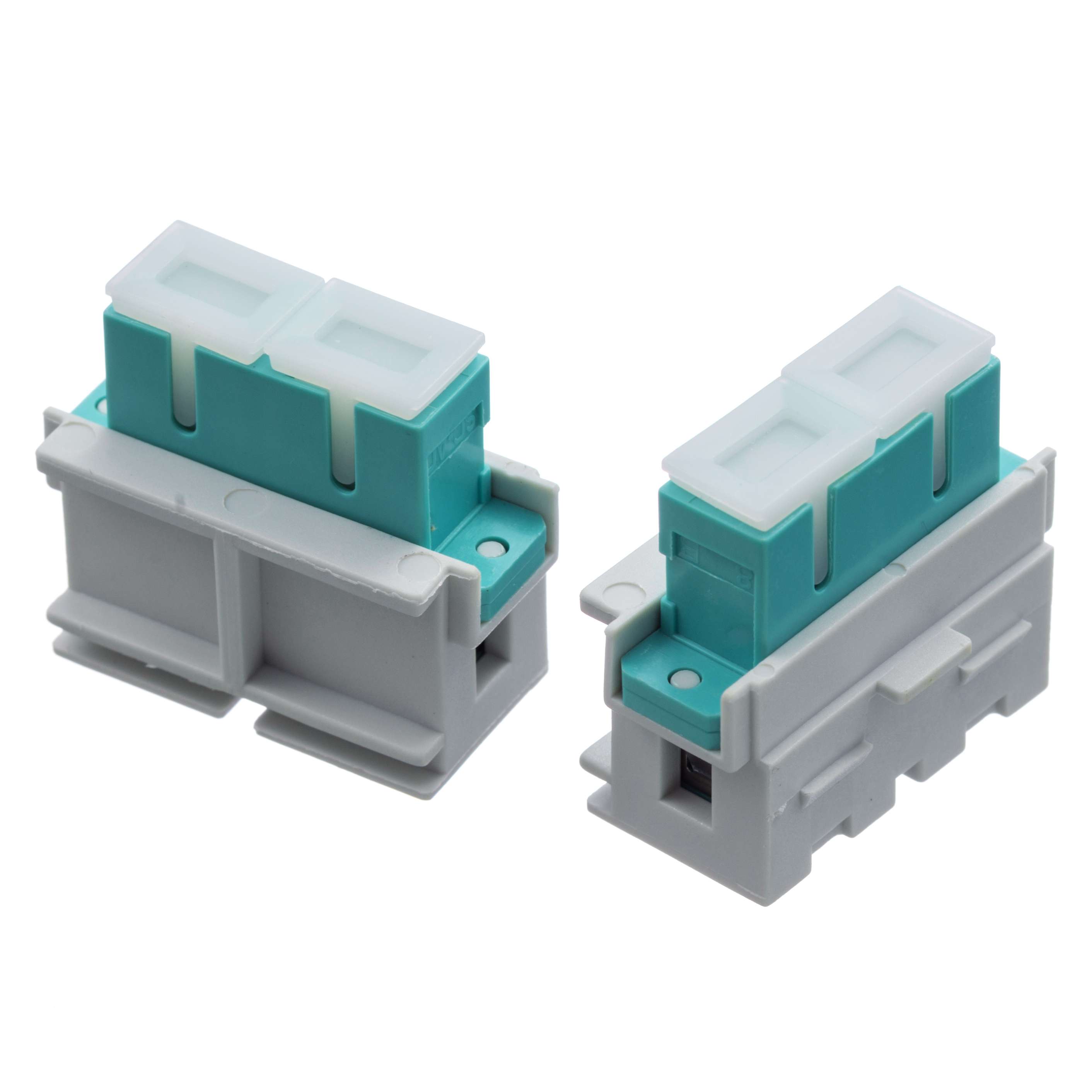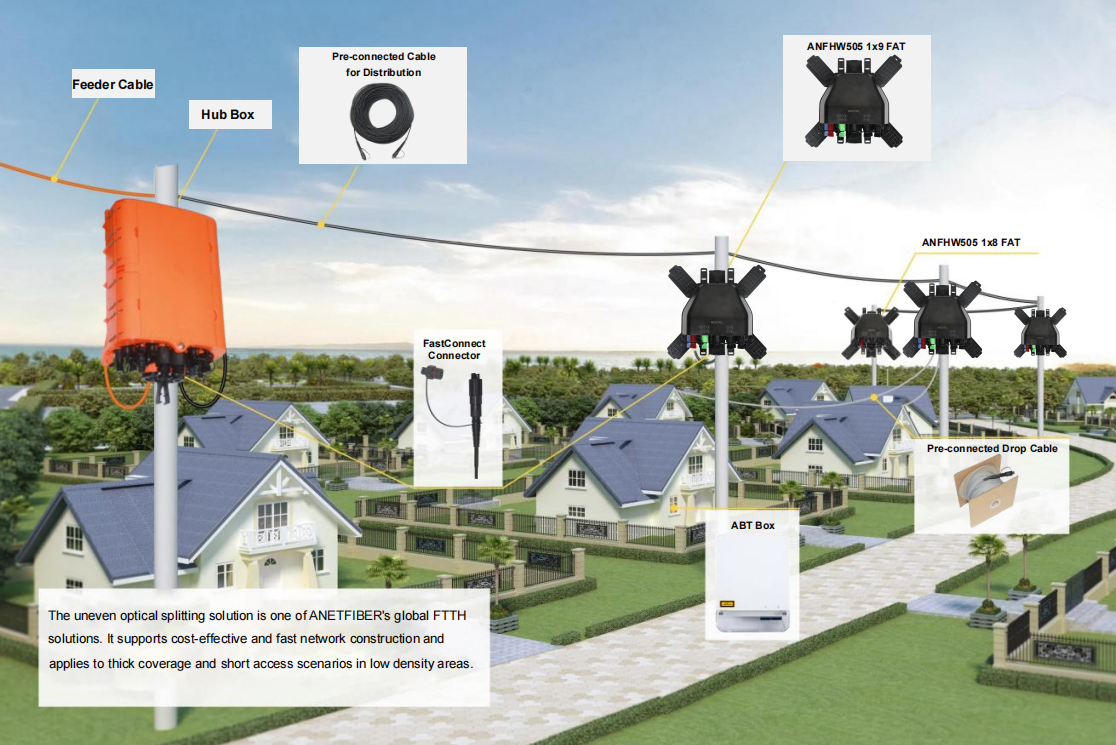Understanding Different Types of Fiber Optic Adapters: A Comprehensive Guide

Choosing the Right Fiber Optic Adapter
Fiber optic adapters play a crucial role in establishing reliable and efficient connections between fiber optic cables. To ensure optimal performance, it is essential to select the appropriate adapter for your specific needs. In this section, we will provide an overview of fiber optic adapters, highlighting their importance in network infrastructure. We will also discuss the target audience for this blog post, which includes technicians, IT professionals, and individuals interested in fiber optic technology. The tone of this blog post will be professional and neutral, providing accurate information to help readers make informed decisions.
Understanding Different Types of Fiber Optic Adapters
Fiber optic adapters come in various types, each designed to accommodate different fiber optic cables and connectors. In this section, we will explore two common types of fiber optic adapters: single-mode and multimode adapters.
Single-mode vs. Multimode Adapters
Single-mode adapters are specifically designed for single-mode fiber optic cables, which have a smaller core size and allow for longer transmission distances. These adapters are ideal for applications that require high-speed data transmission over long distances, such as telecommunications networks and long-haul connections. On the other hand, multimode adapters are compatible with multimode fiber optic cables that have a larger core size. They are suitable for shorter distance transmissions within local area networks (LANs) or data centers.
When choosing between single-mode and multimode adapters, it is crucial to consider the transmission distance and speed requirements of your specific application. Single-mode adapters offer greater reach but may be more expensive than multimode options.
SC, LC, and ST Adapters
SC (Subscriber Connector), LC (Lucent Connector), and ST (Straight Tip) are three popular connector types used in fiber optic networks. Each adapter type has its own physical characteristics and advantages.
SC adapters feature a square-shaped connector that provides excellent stability and low insertion loss. They are commonly used in high-density environments where space is limited, such as data centers.
LC adapters utilize a small form-factor design with a push-pull mechanism, making them easy to install and remove. They are widely used in both single-mode and multimode applications due to their compact size.
ST adapters use a bayonet-style coupling mechanism that ensures secure connections. They were widely used in older network installations but have been largely replaced by SC or LC connectors due to their larger size.
Understanding the physical characteristics and connector types of SC, LC, and ST adapters can help you choose the most suitable option for your specific network requirements. Consider factors such as space constraints, ease of installation, and compatibility with existing infrastructure when making your decision.

Considerations for Selecting the Appropriate Adapter
When selecting a fiber optic adapter, there are several important considerations to keep in mind to ensure compatibility and optimal performance.
Compatibility and Connector Types
Matching connector types is crucial for establishing a reliable connection. It is essential to choose an adapter that matches the connector type of your fiber optic cables. Mismatched connectors can lead to signal loss, increased insertion loss, and potential damage to the equipment. Additionally, consider the compatibility of the adapter with your existing infrastructure. If you have already deployed a specific connector type throughout your network, it is advisable to select adapters that are compatible with that infrastructure. This ensures seamless integration and reduces the need for additional modifications or replacements.
Interchangeability and adaptability are also important factors to consider. Some adapters offer interchangeable connectors, allowing you to switch between different connector types without replacing the entire adapter. This flexibility can be beneficial when working with diverse network environments or when future upgrades require different connector types.
Performance and Specifications
Consider the performance requirements of your network when selecting a fiber optic adapter. Bandwidth requirements and transmission speeds should align with the capabilities of the chosen adapter. Higher bandwidth applications may require adapters that support higher data rates.
Insertion loss and return loss are critical specifications to evaluate as they directly impact signal quality. Lower insertion loss indicates better connectivity and reduced signal attenuation. Similarly, lower return loss signifies minimal reflection of light signals back into the source.
Environmental factors such as temperature, humidity, and exposure to dust or chemicals can affect adapter performance and durability. Ensure that the selected adapter meets environmental specifications suitable for your deployment environment.
By considering compatibility, connector types, performance specifications, and environmental factors, you can make an informed decision when choosing a fiber optic adapter that meets your specific requirements.
Step-by-Step Guide for Choosing the Right Fiber Optic Adapter
Choosing the right fiber optic adapter requires careful consideration of your specific requirements. Follow this step-by-step guide to make an informed decision:
Assessing Your Requirements
Start by identifying the purpose and scope of your fiber optic connection. Determine whether you need a single-mode or multimode adapter based on the transmission distance and data rate requirements of your application. Consider future scalability and upgrades as well, ensuring that the chosen adapter can accommodate potential changes in your network.
Researching Adapter Options
Explore different adapter types and brands available in the market. Look for reputable manufacturers known for their quality products. Read product specifications to understand their features, performance capabilities, and compatibility with your existing infrastructure. Customer reviews can provide valuable insights into real-world experiences with specific adapters. Additionally, consider consulting with experts or colleagues who have experience in fiber optic technology to gather recommendations and insights.
Making an Informed Decision
Compare the features, performance, and pricing of different adapters that meet your requirements. Consider compatibility with your existing connectors and availability of the chosen adapter in the market. Evaluate the pros and cons of each option based on factors such as ease of installation, durability, and customer support provided by the manufacturer. Prioritize adapters that offer a balance between performance, reliability, and cost-effectiveness.
By following this step-by-step guide, you can navigate through various options available in the market and select the most suitable fiber optic adapter for your specific needs.

Conclusion
Understanding the different types of fiber optic adapters is crucial for establishing reliable and efficient connections in fiber optic networks. By selecting the appropriate adapter, you can ensure optimal performance and compatibility with your infrastructure. This comprehensive guide has provided insights into the various types of adapters available, considerations for selection, and a step-by-step process to help you make an informed decision. Whether you are a technician, IT professional, or simply interested in fiber optic technology, this knowledge will empower you to choose the right fiber optic adapter that meets your specific requirements.
See Also
Usos y aplicaciones del cable preconectorizado de fibra óptica
Waterproof Connectors in FTTH Networks: Enhancing Performance and Reliability
Cómo elegir el conector de fibra óptica adecuado
About US
Follow Us
AnetFiber company's main products are indoor and outdoor optical fiber cables, outdoor waterproof pre-connected fiber-to-the-home products, PLC optical fiber splitters, optical fiber jumpers and pigtails, MTP®/MPO high-density big data product solutions, optical fiber field quick connectors and research and development molding, injection molding and production of optical fiber distribution boxes, optical fiber chassis cabinets, the market has expanded to the world, Europe, America, Asia, the Middle East and Latin America.
Address
Shenzhen City, Baoan District, Yanluo Street, Tangxiayong Community, Yangyong Industrial Road, Tonggangda New Energy Vehicle Park 406
Contacts
+86 199 2655 3586

